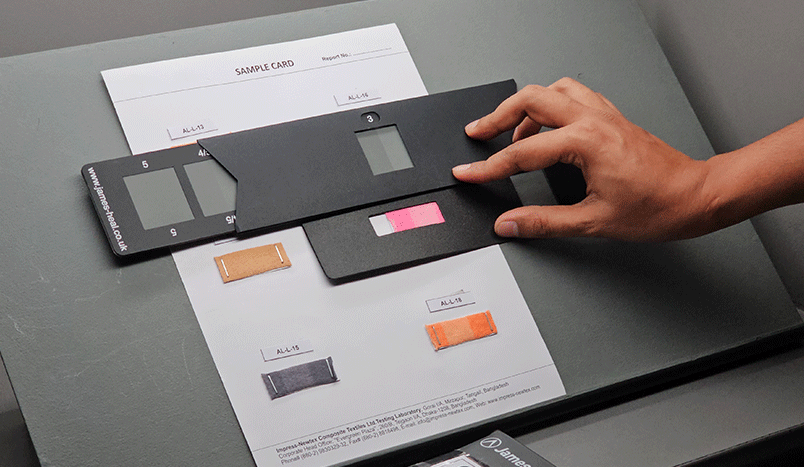Colorfastness is a critical attribute in the textile industry, reflecting a fabric’s ability to retain its color when subjected to various conditions, including washing. The color fastness to washing test is essential for assessing how well textiles maintain their color after laundering, which is particularly important for garments and home textiles that undergo frequent washing. This article explores the various standards for colorfastness to washing tests, their methodologies, and their significance in the textile industry.
Understanding Color Fastness
Colorfastness refers to the resistance of a material’s color to fading or running when exposed to specific conditions such as light, washing, rubbing, and perspiration. In the context of washing, it evaluates how much color loss occurs during laundering and whether any dye transfers to adjacent fabrics. The assessment of color fastness is crucial for ensuring product quality and consumer satisfaction.
Key Color Fastness to Washing Test Standards
Several recognized standards govern the testing of color fastness to washing. Each standard has unique methodologies and requirements tailored to different fabrics and applications. Below are some of the most common standards:
1. ISO 105-C06
Overview: The ISO 105-C06 standard is one of the most widely used methods for assessing color fastness to washing in textiles.Methodology:
- Sample Preparation: Fabric samples are cut to size and sewn with multi-fiber adjacent fabrics.
- Washing Conditions: Samples are subjected to a specified detergent solution at defined temperatures (usually ranging from 40°C to 95°C) for a set period.
- Evaluation: After washing, samples are rinsed, dried, and assessed for color change and staining on the adjacent fabric using a grayscale card.
Significance: ISO 105-C06 provides reliable results that help manufacturers determine how well their fabrics will perform in real-world laundering scenarios.
2. AATCC 61
Overview: The American Association of Textile Chemists and Colorists (AATCC) developed this standard specifically for assessing colorfastness in household laundering.Methodology:
- Washing Procedure: Similar to ISO 105-C06, AATCC 61 involves washing samples with a defined detergent solution at specified temperatures.
- Test Conditions: This standard typically uses a temperature of 60°C and includes agitation that simulates domestic washing conditions.
- Assessment Criteria: The degree of color change and staining is evaluated against established standards.
Significance: AATCC 61 is particularly relevant for manufacturers producing consumer textiles, ensuring that products can withstand regular home laundering.
3. EN ISO 105-C10
Overview: This standard focuses on color fastness to washing with soap at various temperatures.Methodology:
- Temperature Variability: Tests can be conducted at multiple temperatures (e.g., 40°C, 60°C) using soap as the detergent.
- Evaluation Process: Similar evaluation criteria as ISO 105-C06, focusing on both color change and staining.
Significance: EN ISO 105-C10 provides flexibility in testing conditions, allowing manufacturers to assess performance under different laundering scenarios.
4. JIS L 0844
Overview: The Japanese Industrial Standard (JIS) L 0844 outlines methods for testing color fastness to washing in Japan.Methodology:
- Procedure Similarity: This method closely follows the principles of ISO standards but may include specific regional adaptations.
- Washing Solutions: Typically involves using a specified detergent solution at defined temperatures.
Significance: JIS L 0844 ensures that textiles meet local market expectations regarding durability and performance during laundering.
5. GB/T 3921
Overview: This Chinese standard specifies methods for testing color fastness to washing in textiles.Methodology:
- Testing Conditions: Similar procedures as other international standards but tailored for compliance with Chinese textile regulations.
- Evaluation Metrics: Focuses on assessing both color change and staining on adjacent fabrics.
Significance: GB/T 3921 is essential for manufacturers targeting the Chinese market, ensuring compliance with local standards.
Importance of Color Fastness Testing
Quality Assurance
Colorfastness testing is critical for maintaining quality assurance in textile production. By adhering to established standards, manufacturers can ensure that their products meet consumer expectations regarding durability and appearance.
Consumer Satisfaction
Consumers expect textiles—especially clothing and home furnishings—to retain their original colors after repeated washings. Effective testing helps manufacturers deliver products that satisfy these expectations, enhancing brand reputation and customer loyalty.
Compliance with Regulations
Many regions have specific regulations regarding textile performance. Adhering to recognized testing standards ensures compliance with these regulations, reducing the risk of legal issues or product recalls.
Conclusion
The assessment of color fastness to washing is a vital aspect of textile quality control. Various standards—such as ISO 105-C06, AATCC 61, EN ISO 105-C10, JIS L 0844, and GB/T 3921—provide comprehensive methodologies for evaluating how well fabrics maintain their colors during laundering processes. By understanding these standards and implementing rigorous testing protocols, manufacturers can enhance product quality, ensure compliance with regulations, and ultimately improve consumer satisfaction. As the textile industry continues to evolve, staying informed about advancements in testing methods will be essential for maintaining a competitive edge in the market.
For more information on textile testing methods/standards
or textile testing machines, contact us:
What’s App: +86 180 2511 4082
Tel: +86 769 2329 4842
Fax: +86 769 2329 4860
Email: sales@chiuvention.com





